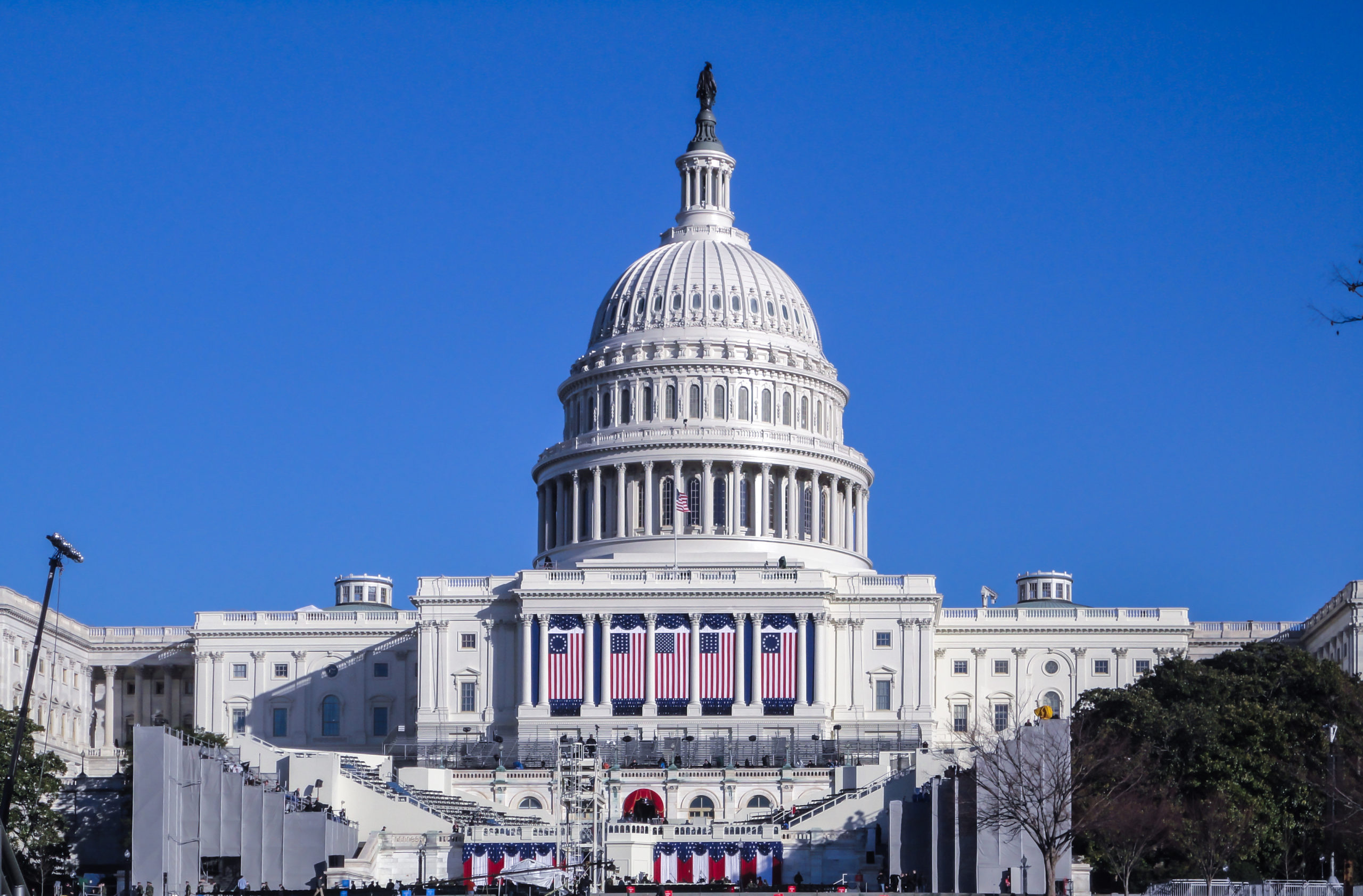
The inauguration for President-elect Joe Biden and Vice President-elect Kamala Harris will occur on the west side of the White House in Washington D.C. this Wednesday, Jan. 20. Afterward, Biden will take the oath of office and deliver his inaugural address.
Following that, Biden and his wife, Jill Biden, will join in a Pass in Review on the opposite front side of the Capitol building and Vice President-elect Kamala Harris and her husband. Then, representatives from all military branches will escort him from 15th Street to the White House.
Unlike past presidential inaugurations, all of these activities are socially distanced due to the COVID-19 pandemic.
Additionally, a “virtual parade across America” will be held. According to Voice of America, the parade organizers said its purpose is to “celebrate America’s heroes, highlight Americans from all walks of life in different states and regions and reflect on the diversity, heritage and resilience of the country as we begin a new American era.”
The presidential inauguration has been a tradition since George Washington, the first U.S. President, began his presidency on April 30, 1789. That day was the first Inauguration Day in American history.
According to the White House Historical Association, large crowds watched President Washington go to the Federal Hall with both houses of Congress presenting. Washington himself even danced after the inauguration.
The inauguration isn’t just the president’s oath. Its activities have become more entertaining, including parades and music that are widely celebrated across the country.
It “reflects not only the president they honor but also the desire of many Americans to celebrate our nation’s rich history and the transfer of presidential power,” the White House Historical Association site states.
The people’s votes do not directly elect the President and Vice President. The states the candidates win dictate how many “electoral votes” they’ll receive.
Members of the Electoral College complete this, and the process consists of three parts: selecting the electors, meeting and voting of the electors and Congress counting the electoral votes.
The Electoral College has 538 electors, representing the number of senators (100), state representatives (435) and the three electors for Washington, D.C. To win the election, the presidential candidate needs at least 270 electoral votes out of the 538 votes total.
Political parties nominate their electors in each state earlier in the year. On the general election day, voters select the presidential electors in their state by voting for the candidate from their party. For example, if the Democratic candidate received more votes in the popular vote, then the electors from the Democratic Party are chosen in that state.
Traditionally, on the Monday after the second Wednesday in December, the electors meet and vote to determine which presidential candidate wins the election formally. In 2020, they met on Dec.14.
All 50 states and Washington D.C. use the “winner-take-all” system, which means all the state or district electoral votes are for the presidential candidate who wins a majority of votes there. The elector must swear to vote for the candidate who wins in the state.
In this election, Trump lost 74 electoral college votes, receiving 232 votes, while Biden got 306. Among the swing states that ended up Blue this time, Trump focused the most on those that ended up in his favor in the 2016 election: Pennsylvania, Michigan and Georgia.
On Jan. 6, Congress met to count the electoral college votes formally, certifying Biden’s win.
However, the 2020 election saw unprecedented events take place. Despite losing the election, President Trump continued to make accusations and statements assuring his supporters he won the 2020 election. President Trump also made claims that Democrats stole the election.
In this election, many voted by mail to avoid gathering in crowds during the pandemic, which President Trump claimed led to fraudulent election results.
In September, at the first presidential debate, he argued that mail voting is designed for fraud and is easily “manipulated” without providing any evidence.
According to the Associated Press, before the election results came out, President Trump said it’s inappropriate for Philadelphia election officials not to allow his campaign to observe mail-in voters.
After losing on election day, President Trump asked for multiple recounts in Pennsylvania, Georgia, and Michigan, resulting in Biden’s favor. No concerns of fraud have been reported. President Trump insisted that many absentee votes were not legitimate and sued those swing states that turned Blue.
Many state attorneys and governors have already confirmed the transparency of this election and turned President Trump down. AP News states that Josh Shapiro, the Pennsylvania Attorney General, said President Trump’s lawsuit was “more a political document than a legal document.”
Nonetheless, President Trump still firmly believes he has won the election.
On Jan. 6, Trump supporters organized a large rally in Washington, D.C., to overturn the election results.
The rally became violent. Four people died, over 52 were arrested and 14 officers were injured, with two wounded seriously; the D.C. National Guard was activated and prepared for responding to the violence.
Following this violence, some members of Congress are thinking about removing President Trump from the White House.
Since Vice President Mike Pence refused to invoke the 25th Amendment, the House of Representatives decided to impeach him by charging him with “incitement of insurrection.”
On Jan. 13, they voted for the impeachment, which passed with 232 for the impeachment and 197 against. There were 10 Republicans among the 232 members who supported the impeachment.
Dan Scavino, the Deputy Chief of Staff for Communications, posted a tweet on Jan. 7 stating that President Trump promises “there will be an orderly transition on Jan. 20” while he still “totally disagree[s] with the outcome of the election.”
Despite President Trump’s continuous denial, Congress confirmed Biden’s victory as president. Biden’s inauguration will occur on Jan. 20, and the U.S. will have a new president.
